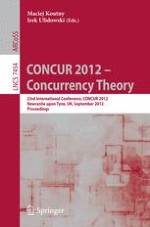This book constitutes the thoroughly refereed proceedings of the 23rd International Conference on Concurrency Theory, CONCUR 2012, held in Newcastle upon Tyne, UK, September 4-7, 2012. The 35 revised full papers presented together with 4 invited talks were carefully reviewed and selected from 97 submissions. The papers are organized in topics such as reachability analysis; qualitative and timed systems; behavioural equivalences; temporal logics; session types; abstraction; mobility and space in process algebras; stochastic systems; probabilistic systems; Petri nets and non-sequential semantics; verification; decidability.
